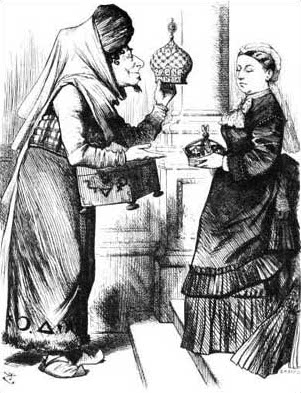
William Goldman was an American novelist, playwright, and screenwriter. He first came to prominence in the 1950s as a novelist before turning to screenwriting. He won Academy Awards for his screenplays Butch Cassidy and the Sundance Kid (1969) and All the President's Men (1976).
Irene is a name derived from εἰρήνη (eirēnē), the Greek for "peace".
The Wonderful Wizard of Oz or The Wizard of Oz most commonly refers to:
Sheik or Sheikh, literally "elder" in Arabic, is the honorific title for the ruler of a tribe.
Mephisto or Mephistopheles is one of the chief demons of German literary tradition.

George Ade was an American writer, syndicated newspaper columnist, and playwright who gained national notoriety at the turn of the 20th century with his "Stories of the Streets and of the Town", a column that used street language and slang to describe daily life in Chicago, and a column of his fables in slang, which were humorous stories that featured vernacular speech and the liberal use of capitalization in his characters' dialog.
Slim or SLIM may refer to:
The Lovers is a trump or "Major Arcana" tarot card.
The Woman in White may refer to:
Henry Martyn Blossom was an American writer, playwright, novelist, opera librettist, and lyricist. He first gained wide attention for his second novel, Checkers: A Hard Luck Story (1896), which was successfully adapted by Blossom into a 1903 Broadway play, Checkers. It was Blossom's first stage work and his first critical success in the theatre. The play in turn was adapted by others creatives into two silent films, one in 1913 and the other in 1919, and the 1920 Broadway musical Honey Girl. Checkers was soon followed by Blossom's first critical success as a lyricist, the comic opera The Yankee Consul (1903), on which he collaborated with fellow Saint Louis resident and composer Alfred G. Robyn. This work was also adapted into a silent film in 1921.
Gentlemen Prefer Blondes may refer to:
George IV of the United Kingdom has been depicted many times in popular culture.

Queen Victoria of the United Kingdom of Great Britain and Ireland, Empress of India has been portrayed or referenced many times.

Leave It to Jane is a musical in two acts, with music by Jerome Kern and book and lyrics by Guy Bolton and P. G. Wodehouse, based on the 1904 play The College Widow, by George Ade. The story concerns the football rivalry between Atwater College and Bingham College, and satirizes college life in a Midwestern U.S. town. A star halfback, Billy, forsakes his father's alma mater, Bingham, to play at Atwater, to be near the seductive Jane, the daughter of Atwater's president.

The Slim Princess is a 1920 American silent comedy-drama film starring Mabel Normand, directed by Victor Schertzinger, produced by Samuel Goldwyn, and written by Gerald C. Duffy based on a musical play of the same name by Henry Blossom and Leslie Stuart, which was from a story by George Ade. The picture is a Goldwyn Pictures Corporation production with a supporting cast featuring Hugh Thompson, Tully Marshall, Russ Powell, Lillian Sylvester, and Harry Lorraine.

The Slim Princess is a 1915 American silent comedy film directed by E. H. Calvert and starring Francis X. Bushman, Ruth Stonehouse and Wallace Beery. The movie was written by Edward T. Lowe, Jr. from a story by George Ade and play by Henry Blossom, and was subsequently remade into a 1920 film starring Mabel Normand. The farcical plot involves a princess of a fictional country, loosely based upon Turkey, in which obese women are prized and the normal-sized protagonist is widely regarded as being too slender.
The damsel in distress is a theme in world art, entertainment, and media, in which a beautiful woman must be rescued by a hero usually a man.
Golden Princess may refer to:
Die Zirkusprinzessin is an operetta by Emmerich Kálmán.
The Slim Princess is a musical in three acts with music by Leslie Stuart and a book and lyrics by Henry Blossom. The musical is an adaptation of George Ade's 1907 novel The Slim Princess. Blossom and Stuart's version of this story was adapted into a silent film first in 1915, and a second time in 1920.
This page is based on this
Wikipedia article Text is available under the
CC BY-SA 4.0 license; additional terms may apply.
Images, videos and audio are available under their respective licenses.





